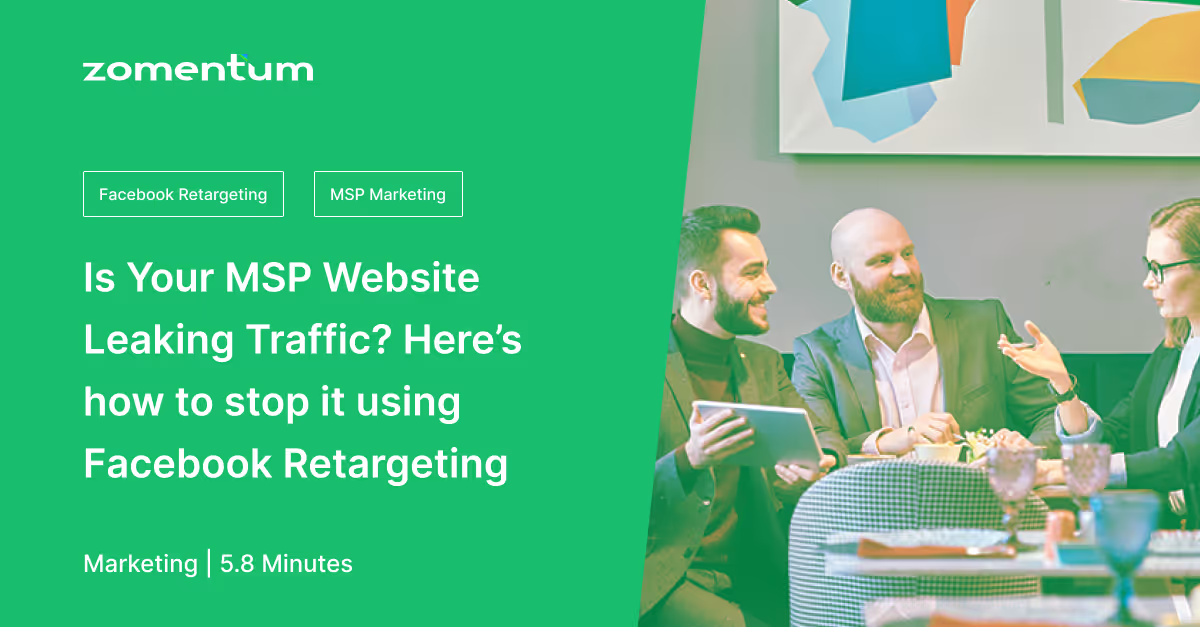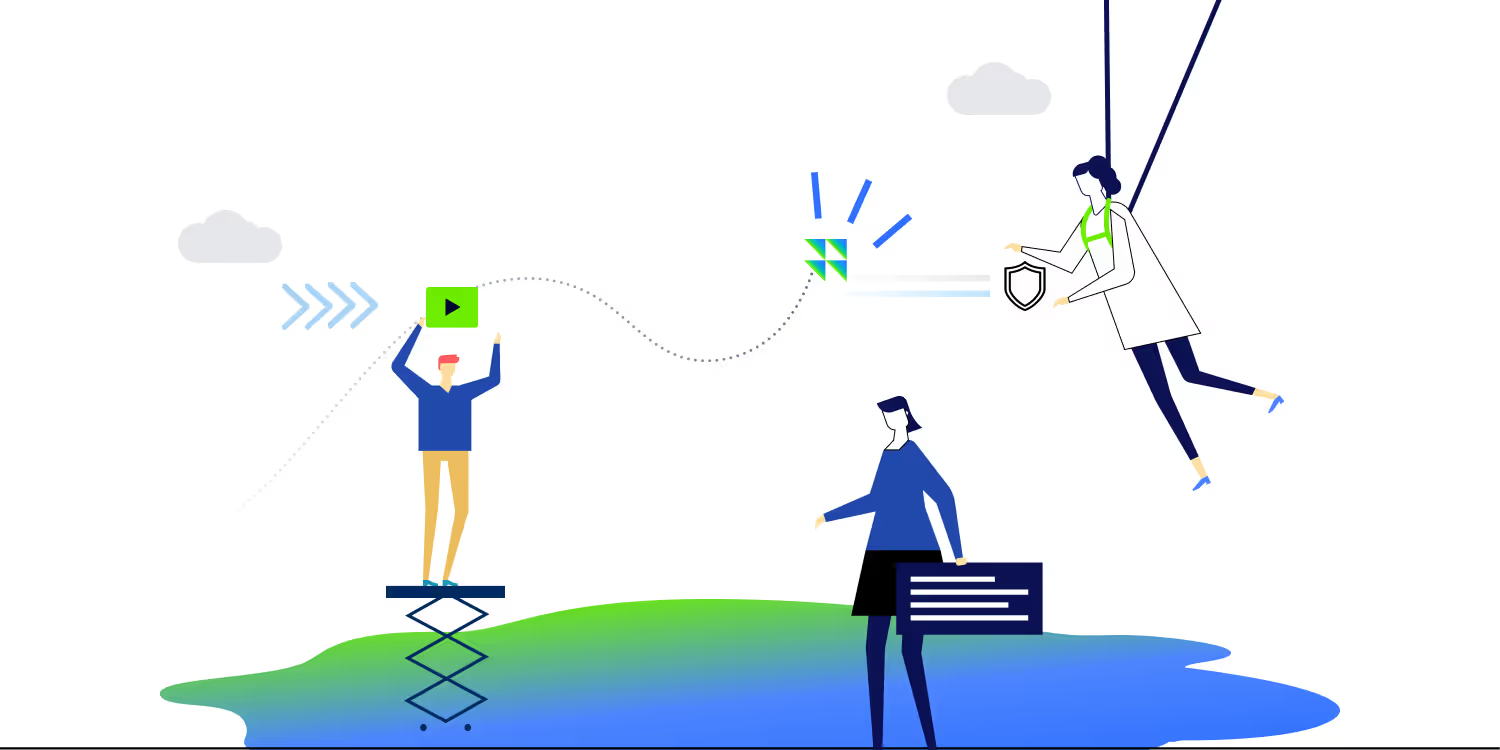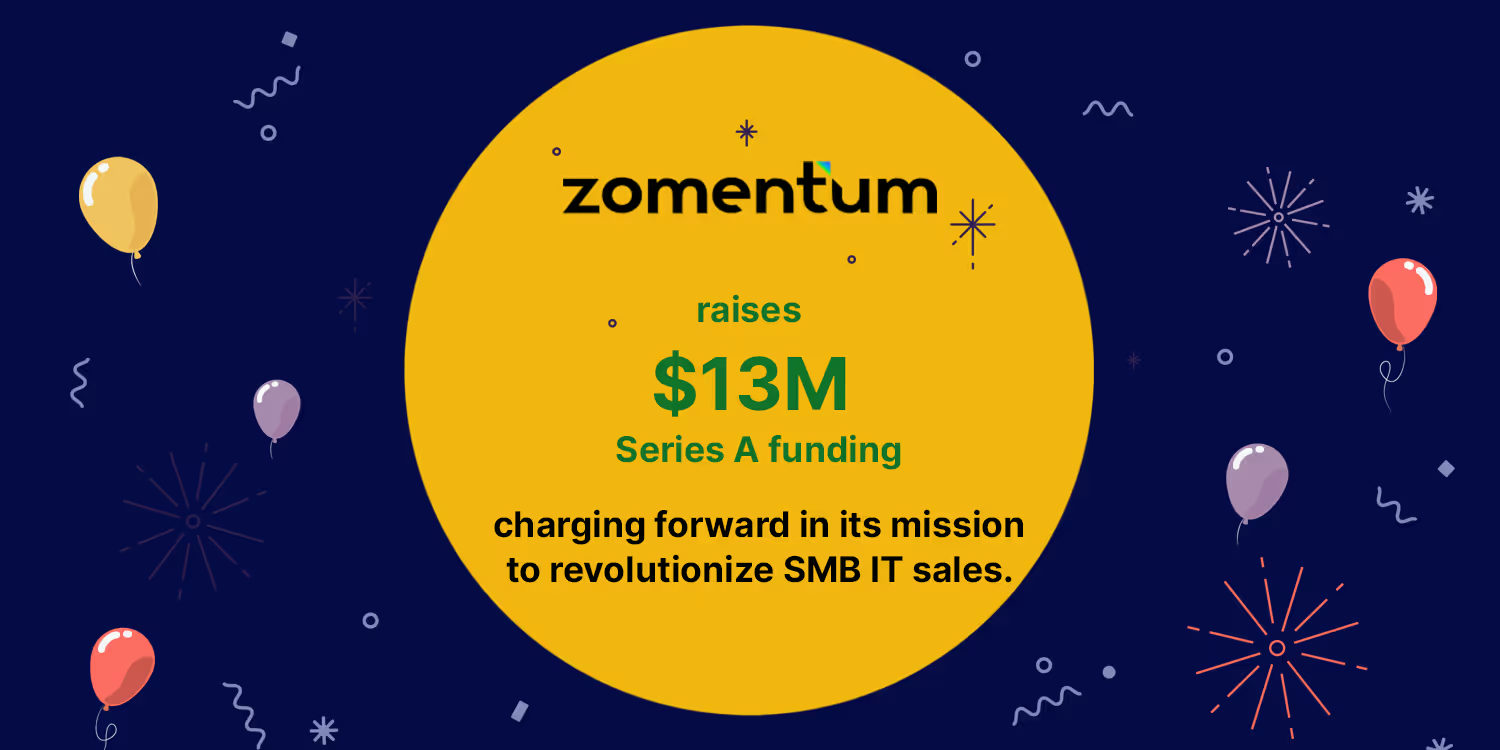Is Your MSP Website Leaking Traffic? Here’s how to stop it using Facebook Retargeting

I call this the leaky bucket logic. No matter how much money, time, and effort you invest in marketing your IT business, you'll be losing out to potential customers that visit your website.
There are many reasons why a potential customer might visit your website - here are a few:
- They've met you at a local networking group.
- A business associate has recommended your company.
- They are doing local research on IT providers in search engines.
- They've seen your marketing materials (for example, videos on LinkedIn)
The list is endless, but you will have visitors to your website regularly researching your company and navigating your website. These visitors won't take any action, they won't fill in the contact form, they won't email you, they won't pick up the phone.
They'll simply forget or get distracted by something else in their daily routine. No matter how well-designed your website is to navigate, they'll bounce off and completely forget about you and your business.
This is where retargeting comes in.
What is Retargeting?
It's something you've probably already experienced on an e-commerce website like Amazon.
You'll be shopping around for a product or service, but you don't add to the cart and checkout for some reason.
Then the very next day, you start to see that product or service following you around the web; it may even appear in your Facebook timeline.
This is retargeting.
How it works is simple. Facebook, LinkedIn, Google & Twitter all offer a retargeting pixel that you can install on your website. The code is injected into all pages on your website, and any time a website visitor comes to your page a cookie is dropped on their browser.
The cookie instructs platforms like Facebook to show videos to anyone who has visited your website.
Why Facebook should be your choice of retargeting platform
Retargeting is extremely easy to set up in the Facebook business manager, and I highly suggest you use Facebook retargeting as the platform of choice.
There are four reasons for this.
- First, most people have a Facebook account, and you can guarantee that website visitors will visit Facebook over a day.
- Secondly - it's the easiest to set up - yes, Google, LinkedIn & Twitter all offer similar service, but they have several restrictions and is more challenging to set up - time is of the essence.
- Third - it's cheap, $5/day if not less.
- Fourth and probably the most important reason is due to Facebook's "engagement intelligence.”
How to set up Facebook’ Engagement Intelligence
No other social media or online platform allows you to perform this highly effective advertising strategy. Facebook wins hands down - most people have a Facebook account so it's a no-brainer to implement.
Facebook has a setting when creating "custom audiences" that allow you to create a new audience of users who interact with your videos.
The settings, at the time of writing, are as follows:
- Target user that has watched 3 seconds of a video
- Target user that has watched 10 seconds of a video
- Target user that has watched 25% of a video
- Target user that has watched 50% of a video
- Target user that has watched 75% of a video
- Target user that has watched 100% of a video
Why is this setting so important?
You can target people that have watched any of your videos online.
More importantly, you can target people that have visited your website and watched a retargeting video.
These users are your "hot list.” They’ve already been to your website and they've watched some or all of a video you've targeted them with. This means that there's an excellent chance they are interested in what you have to say and offer.
This is your opportunity to appear in their timeline consistently.
Cold and Warm Audiences - How to show video ads to two different sets
When setting up an engagement intelligence campaign in Facebook business manager, I set up two ads sets.
The first ad set consists of the 5 most popular videos I've published in the last 30 days. These 5 videos target people that have been to my website.
The remaining 25 videos from the last month are set up in a separate ad set which I call the "warm audience.” The warm audience is set to target anyone that has watched 25% or more of the 5 videos in the "cold audience” - my first ad set.
The engagement intelligence settings are similar to having an email list. However, the beauty of this is that it’s not email, and there's a good chance that the people that have opted in (watched 25% of the cold audience videos) will view the 25 warm audience videos.
The other benefit of this, if you set it up correctly, is that you'll have a new video displayed almost every day of the month to a warm audience.
Over time this audience will grow to appreciate your videos and style.
When you reach out to them - they'll welcome the conversation, and this is your chance to start your sales process.
As an added benefit, when it eventually comes to quoting that monthly managed service contract, you'll have the upper hand.
These prospects will have seen many of your videos and will have the sense that they know you. They may even know you better than the current IT provider because you appear on their device every day.
If you're up against a few IT providers, you'll win the business. Trust me, I grew IT Rockstars over 12 months using this same process - it works fabulously and is completely untapped.
If you want a complete video overview of how the setup works, check out MSP marketing membership - we teach the process and have a Q&A session if you get stuck. It’s well worth the money and includes everything you need to start marketing your IT business using video.
Author Bio

Scott is the founder of IT Rockstars. He has an extensive career spanning both IT and marketing. As a systems engineer at heart, Scott saw an opportunity at a young age in generating leads for his break-fix computer repair business using online marketing techniques. This evolved into the managed service space where Scott has worked for over 15 years. Now he’s helping fellow MSPs and IT business owners generate more leads and win more sales.
Suggested Blogs

What’s new in Zomentum - December 2019
.avif)
Zomentum Announces the Top Influential Partners of 2023: Leading the Way in Growth and Innovation

